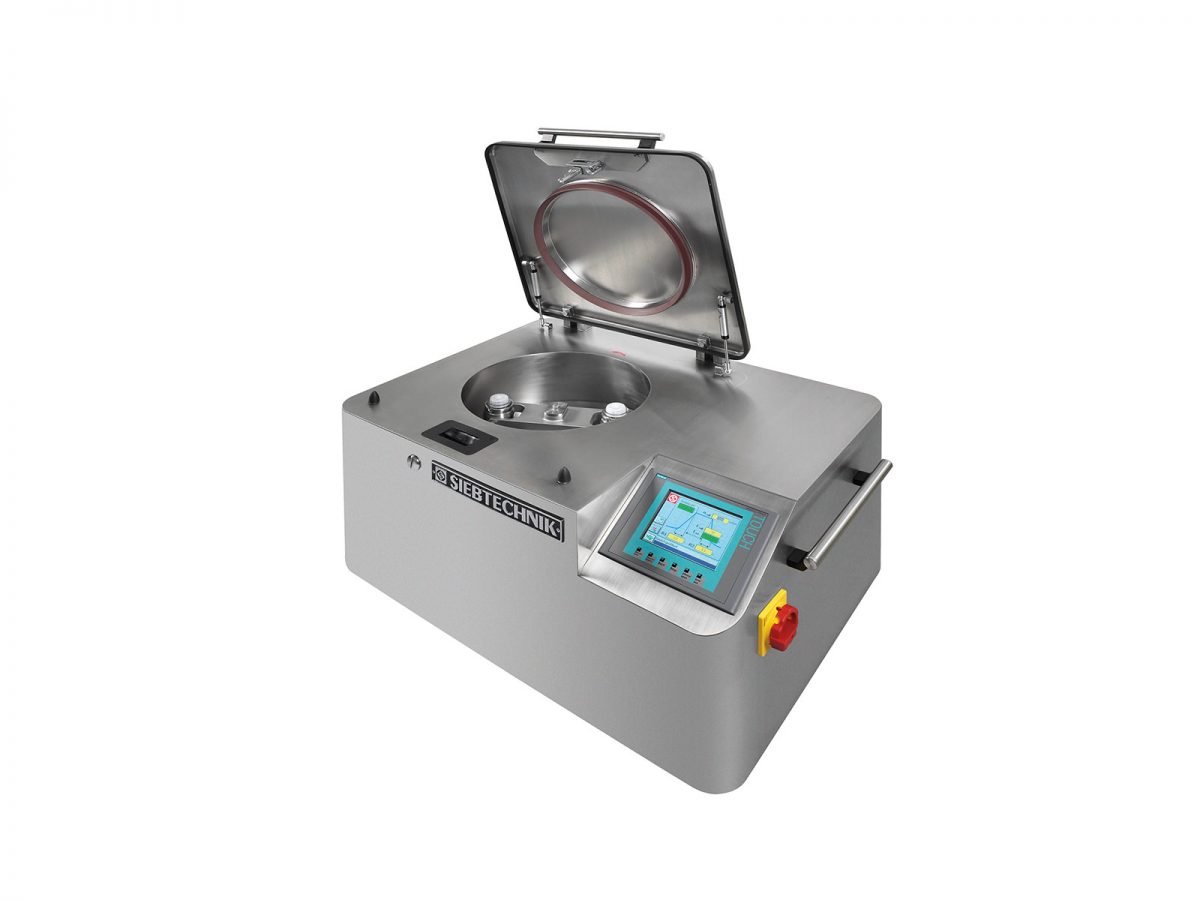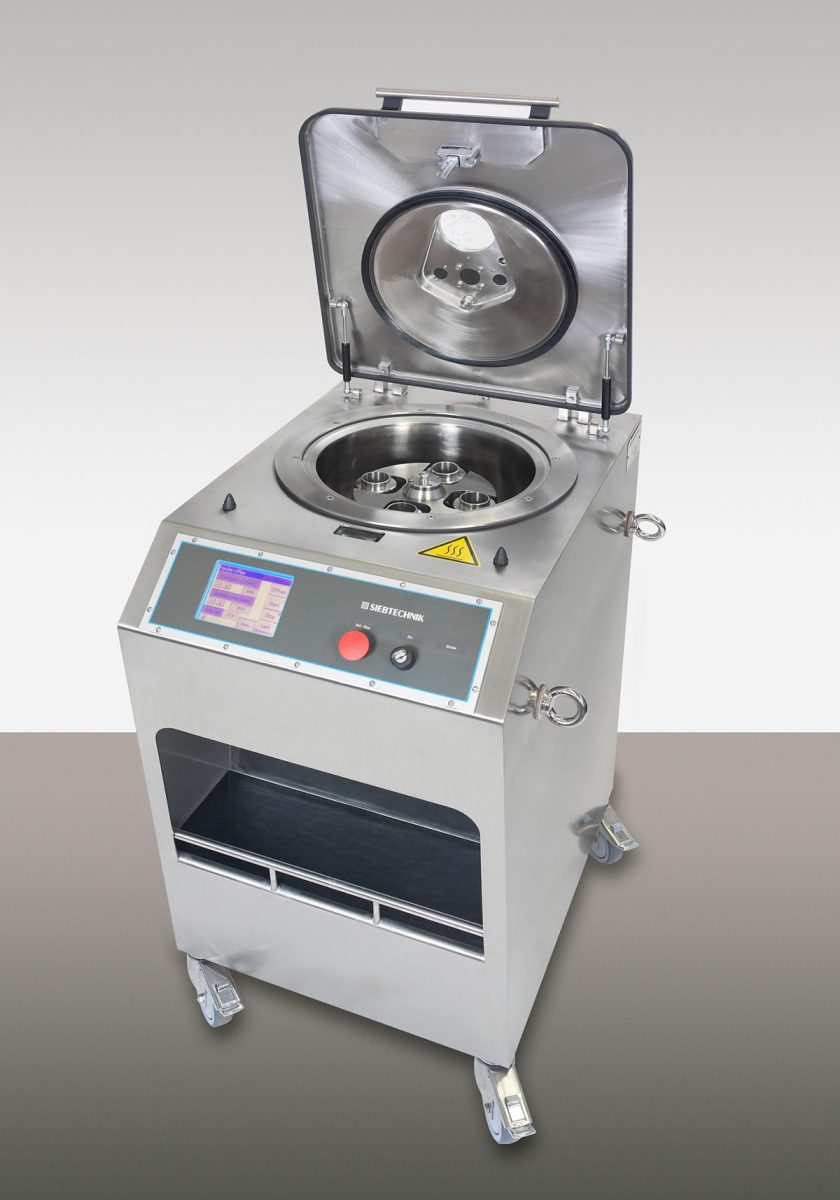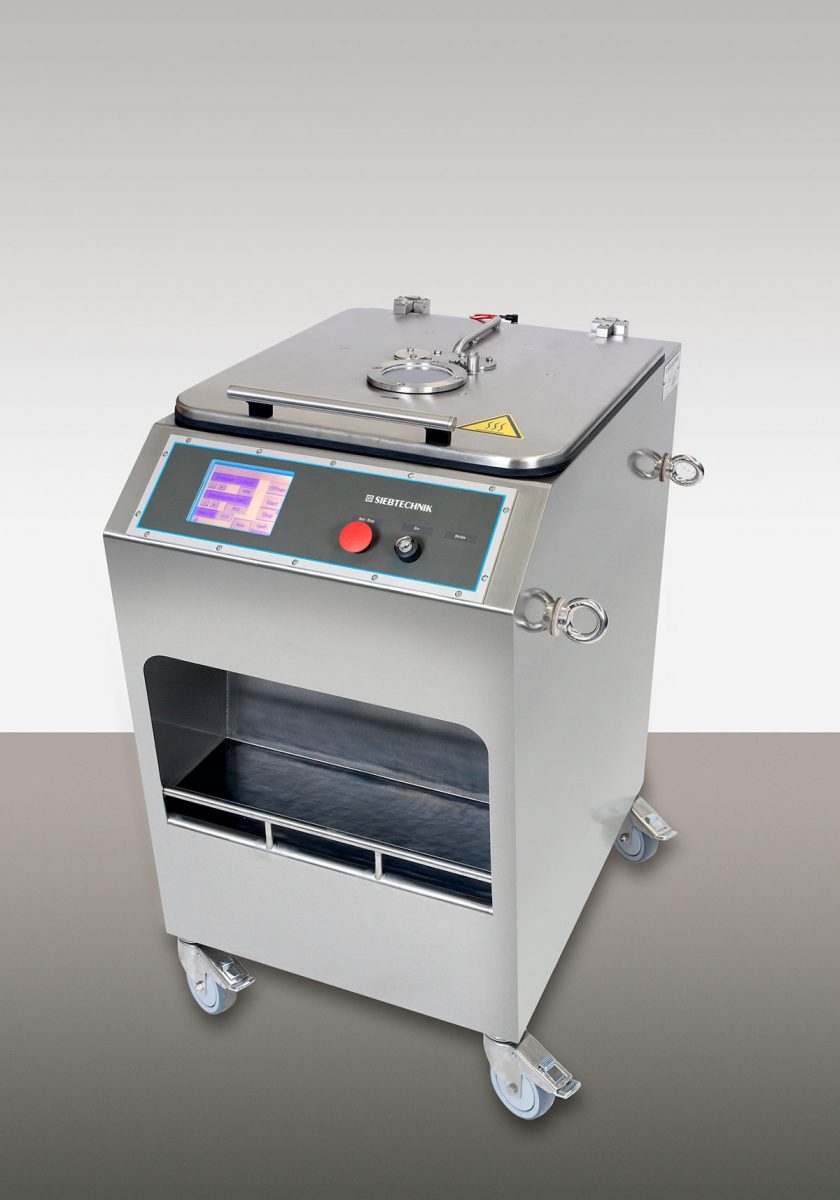CENTRIFLEX
O CENTRIFLEX possui uma construção mecânica extremamente robusta e um sistema de controle totalmente eletrônico. Praticamente todos os tipos de aparelhos de separação centrífuga podem ser facilmente testados e / ou simulados com uma pequena quantidade de material. Parâmetros operacionais essenciais – força g, tempo de permanência, espessura do bolo – podem ser precisamente simulados no teste.
O CENTRIFLEX é acelerado para a velocidade nominal em um tempo muito curto e é travado eletricamente. Aqui, uma parada lenta ou rápida é possível. A parada rápida automática permite a obtenção de tempos precisos de centrifugação. O controle da centrífuga é feito por meio de uma unidade de controle de tela de toque fácil de ler, com display digital de velocidade, tempo de centrifugação e status de operação. Temporização automática ou operação manual com o tempo de manutenção pode ser definido.
O CENTRIFLEX é projetado como uma unidade independente para configuração e enchimento fáceis de operar. O recesso de retenção na frente da caixa oferece um local de proteção para tomadas para descarte centralizado e filtrado.
Naturalmente, a centrífuga é equipada com um intertravamento de tampa elétrica, de modo que o acesso às partes rotativas é possível apenas quando a unidade está parada.
O item de menu de variantes de conexão indica os muitos meios possíveis pelos quais o CENTRIFLEX pode ser usado no laboratório e centro técnico para a geração de quantidades menores de produtos.
CENTRILAB
Os tempos de aceleração e parada podem ser precisamente pré-selecionados em uma tela sensível ao toque até o décimo de segundo mais próximo. A fim de evitar redemoinhos do produto durante a análise, o CENTRILAB é equipado com uma função de soft-start-stop especialmente desenvolvida.
O CENTRILAB é projetado como uma unidade de mesa portátil. Naturalmente, a centrífuga é equipada com um intertravamento de tampa elétrica, de modo que o acesso às partes rotativas é possível somente quando a unidade está parada.
With the appropriate accessories and in a few hand movements the CENTRIFLEX can be converted to the following variants:
Beaker centrifuge
For testing the sedimentation behaviour of suspensions or filtration behaviour of solids cakes. The centrifuge’s bottle holder holds 2 bottles or 4 bottles each with a capacity of 150 ml. Depending on the application, solid beakers or filter beakers are used.
The following filtering media can be inserted in the filter beakers:
- CONIDUR® slot-perforated plates
- Laser-perforated plates
- Slotted screen panels
- Filter paper
Beaker centrifuge (bottle centrifuge) with rotary feed system
If beakers are used, the centrifuge can be additionally fitted with a co-rotating feed system so that it can be filled while in operation. With the filtration beaker insert washing tests can also be conducted. Windows in the beaker sides and a special stroboscopic lamp (both optional) enable filtration and sedimentation processes to also be monitored and assessed visually.
Screen centrifuge with washing pipe
The screen centrifuge insert can be used for the separation of solids from liquids.
For this purpose the bowl is fitted with a wire mesh inlay and a filter bag (CONIDUR®, laser and slotted-screen inserts can also be used).
After ejection of the liquids the solids cake can also be washed and/or neutralised with the aid of a spray pipe.
Solid bowl centrifuge with overflow weir
or additionally with peeling tube. As a sedimentation centrifuge, this is used in many different ways to clarify liquids, particularly if the solid matter does not settle readily and requires longer centrifuging times.
The liquid rising to the surface can be discharged through a peeler tube after the solid matter has settled. Without the peeler tube the solid bowl can also be used as an overflow centrifuge for decanting liquids.













